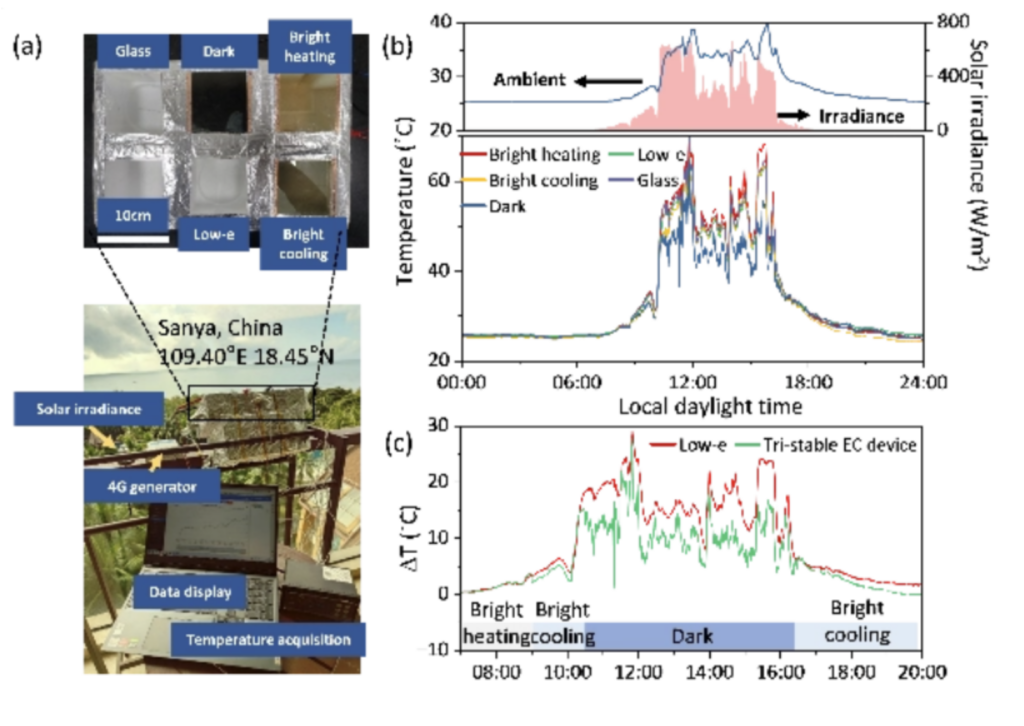https://www.nature.com/articles/s41893-024-01349-z
http://j.people.com.cn/n3/2024/0517/c95952-20171177.html
A team of researchers from the Shanghai Institute of Silicate Research of the Chinese Academy of Sciences, in collaboration with Professor Ronggui Yang of Huazhong University of Science and Technology, developed a new electrochromic structure from the perspective of optimizing light-heat exchange in all wavelength bands (visible light, near-infrared, and mid- and far-infrared). This can be used for thermal management of windows to maximize the use of solar radiation in visible and near-infrared light and radiative cooling in mid-infrared light.
Energy-saving glass must achieve a dynamic response in its own energy exchange capability based on dynamic changes in environmental temperature and solar radiation. The material must switch between multiple optical states within a wide wavelength band. According to outdoor experiments conducted by the research team in Shanghai and Sanya, Hainan Province, the windows with the new electrochromic structure can be cooled continuously throughout the day on a typical sunny day, up to 14°C cooler than conventional commercial low-E windows. The new electrochromic component launched by the research team undergoes three morphological changes due to phase transitions in thin films of vanadium dioxide and tungsten oxide. By applying different voltages to the structure from the outside, lithium cations diffuse into the monoclinic vanadium dioxide and tungsten oxide layers, respectively, causing two phase transitions. The three optical states of the electrochromic structure can be maintained for more than four hours.
The team further found that in different temperatures and climates, the emissivity requirements of the inside and outside of energy-efficient windows are often different. In a building’s year-round thermal management, the outdoor environment and window surface temperatures exceed those of the interior during the summer months. To reduce cooling energy consumption, it is necessary to reduce heat gain and radiant heat entering the interior from outdoors through windows. In winter, radiant heat from the interior to the window must be reduced to prevent heat loss, and low emissivity must be set on the inside of the window as well. The team further optimized the emissivity of the outer and inner electrodes of the electrochromic structure to minimize the exchange of radiant heat between outdoors and indoors.


